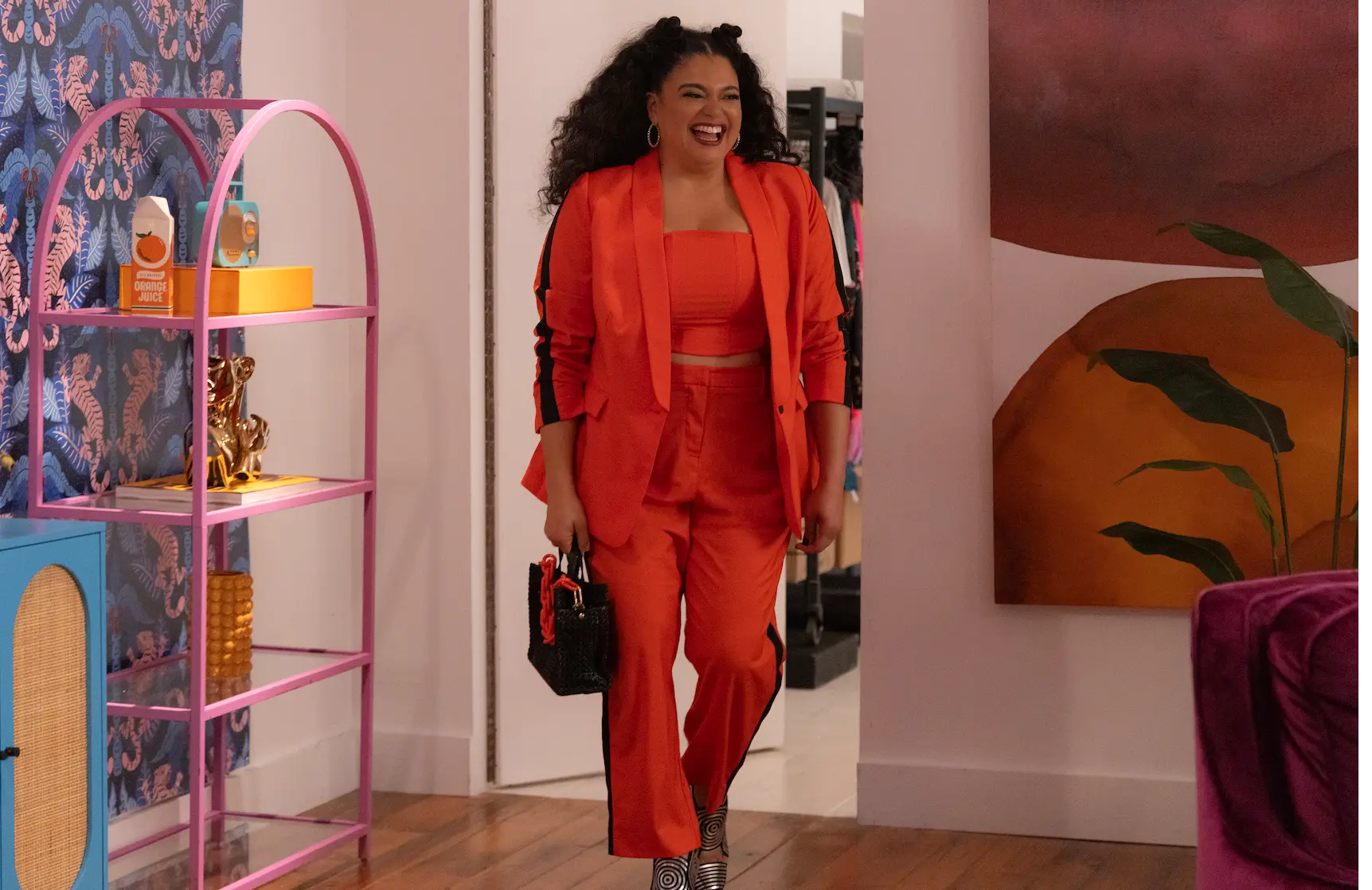Survival of the Thickest Is the Unapologetic Comedy Fat Girls Deserve
-
 Michelle Buteau in Survival of the Thickest (Photo: Jocelyn Prescod/Netflix)
Michelle Buteau in Survival of the Thickest (Photo: Jocelyn Prescod/Netflix)Mavis Beaumont (Michelle Buteau) is confident and in charge from the very first scene in Survival of the Thickest. She breezily weaves through a high-fashion photoshoot, offering words of encouragement to nervous models and stepping in with a brilliant idea when one setup just doesn’t work. When her hot photographer boyfriend turns the camera on her, she knows just what to do, and he happily flaunts their relationship and supports her on set. It doesn’t even matter that that same boyfriend is discovered to be a lying cheater just a few scenes later — the upbeat details of that opening sequence are ones that are rarely afforded to “plus-sized” (blech) women on TV, and they set the tone for an entire series focused on being a joyful and confident fat girl.
The Netflix comedy is based on Buteau’s own book of essays by the same name, and while some specifics have been fudged — Buteau is a comedian, not a stylist; she had a long-distance relationship with a Dutch man, not an Italian one, etc. — the spirit of the story stays true to the source material. Both Buteau and Mavis had a winding path to success with plenty of flops along the way, but ultimately made it through because of good friends, self-confidence, and more than enough messy life experiences to learn the right lessons. And both become body-positivity advocates by simply living their lives.
In Survival of the Thickest, Mavis realizes she has to figure out what’s next when she walks in on her boyfriend cheating on her. Not only is he with another woman, but she’s a younger, skinnier version of Mavis. It’s enough to send her into a spiral about her appearance, and it seems at first that this comedy will be just another in a handful of shows about a larger woman thinking she’s not attractive enough only to go through a long, emotional journey to realize that she is.
But thankfully, Buteau knows better than to sit in those depressing waters for long. Mavis still has an introspective moment of low self-esteem post-breakup, but she quickly snaps out of it, confidently flirting and embracing being a hot, single woman in New York City. There’s no wallowing or melancholy scenes of staring in a mirror and analyzing her body — it’s straight to the bar to do a twerking handstand.
It’s a far cry from Shrill’s Annie (Aidy Bryant). At the start of the series, Annie is unsure that anyone will find her attractive, awkward in her “hot” clothes, and emotional about being seen. Those are real things that people of different shapes and sizes feel, of course, but it’s not singularly representative of the “curvy” (oh, boy) community. But because there have been so few comedies starring fat women, that series became the only beacon of representation for an entire group that is far from a monolith.
When Shrill premiered, it was rightly praised as being a radical comedy, shining a light on fatphobia and the experience of big women in a way that other series hadn’t. It was, like Survival of the Thickest, based on a memoir, this one by Lindy West, depicting her very real experience. But because of the lack of media thus far centering fat women, Survival of the Thickest is an important addition to make clear that that’s not the only experience.
And Buteau makes it clear that neither she nor Mavis are there to be some sort of all-knowing queen who exist to spread the message that fat people can be beautiful, too. Instead, Mavis’ role as a stylist introduces a bevy of characters who are already super comfortable with their bodies — they just need better or different clothes to put on them. In Episode 6, Mavis is hired by Nicole Byer (playing herself), who is in need of a stylist for a lingerie show. Mavis isn’t there to help Byer or any of her models find confidence in themselves, she’s just there to make them look good.
Mavis says it best in that episode: “I really just wanted to take beautiful kings and queens and nonbinary royalty and just showcase them in beautiful bright bold colors in the light because they haven’t let the world shame them into shrinking.”
That doesn’t mean there aren’t moments of vulnerability or self-doubt, but they aren’t the character’s main focus. Survival of the Thickest’s humor doesn’t rely on anyone trying to squeeze into shapewear, and its most emotional moments don’t center on Mavis feeling bad about her physical appearance. Throughout the entire series, we’re simply laughing and crying with, not at, Mavis as she works through a major life change in her late 30s. And even when things get messier than she thought, she still holds onto her sense of self and celebrates every part of her body along the way.
Survival of the Thickest is streaming on Netflix. Join the discussion about the show in our forums.
Brianna Wellen is a TV Reporter at Primetimer who became obsessed with television when her parents let her stay up late to watch E.R.
TOPICS: Survival Of the Thickest, Netflix, Shrill, Aidy Bryant, Lindy West, Michelle Buteau, Nicole Byer